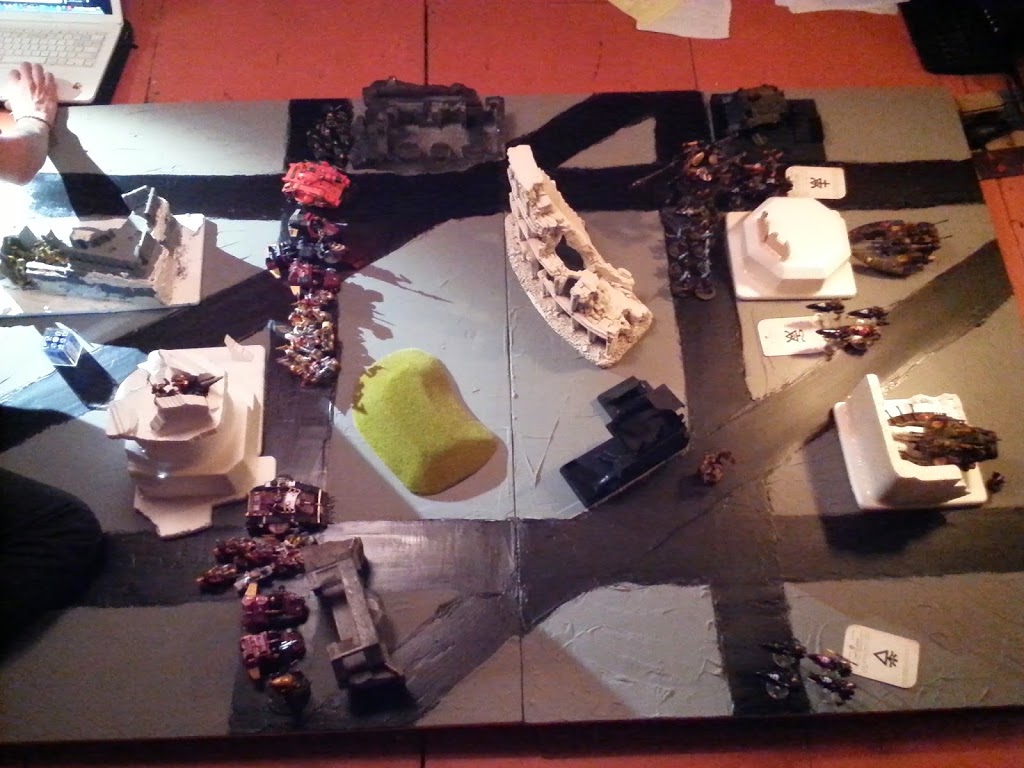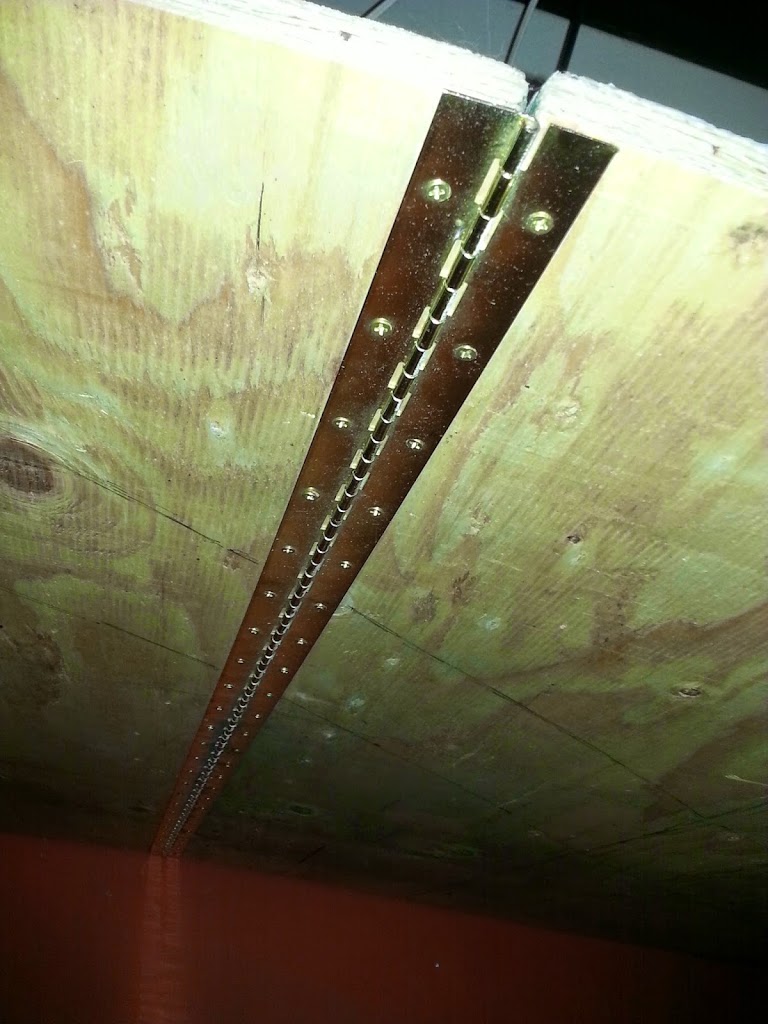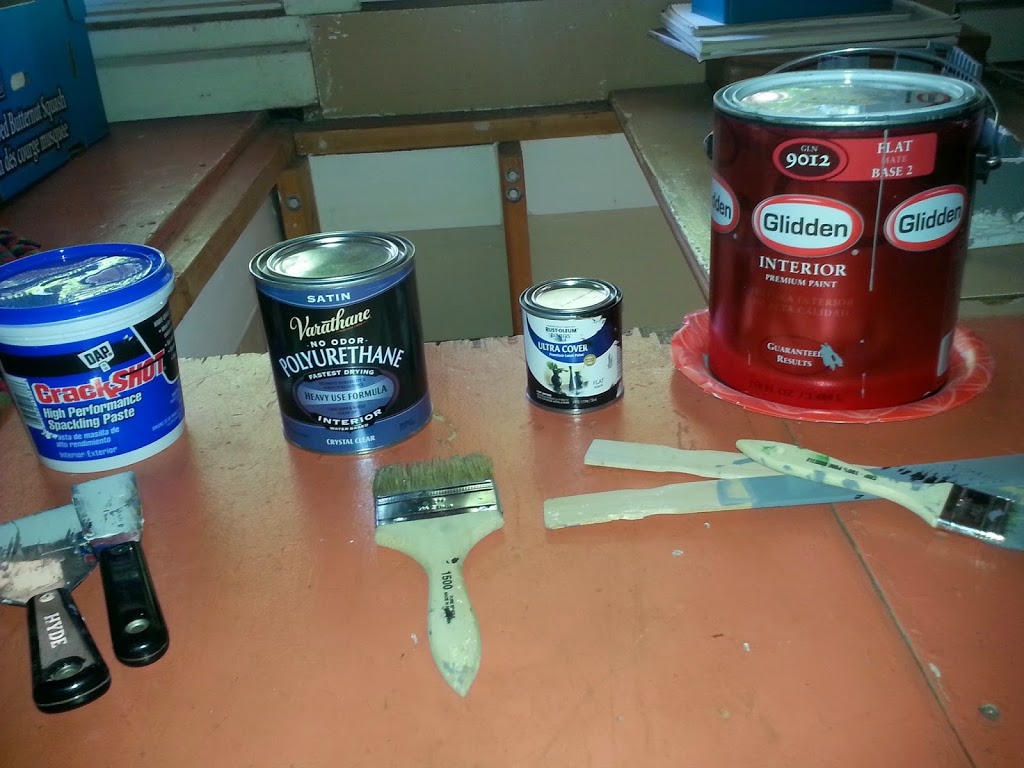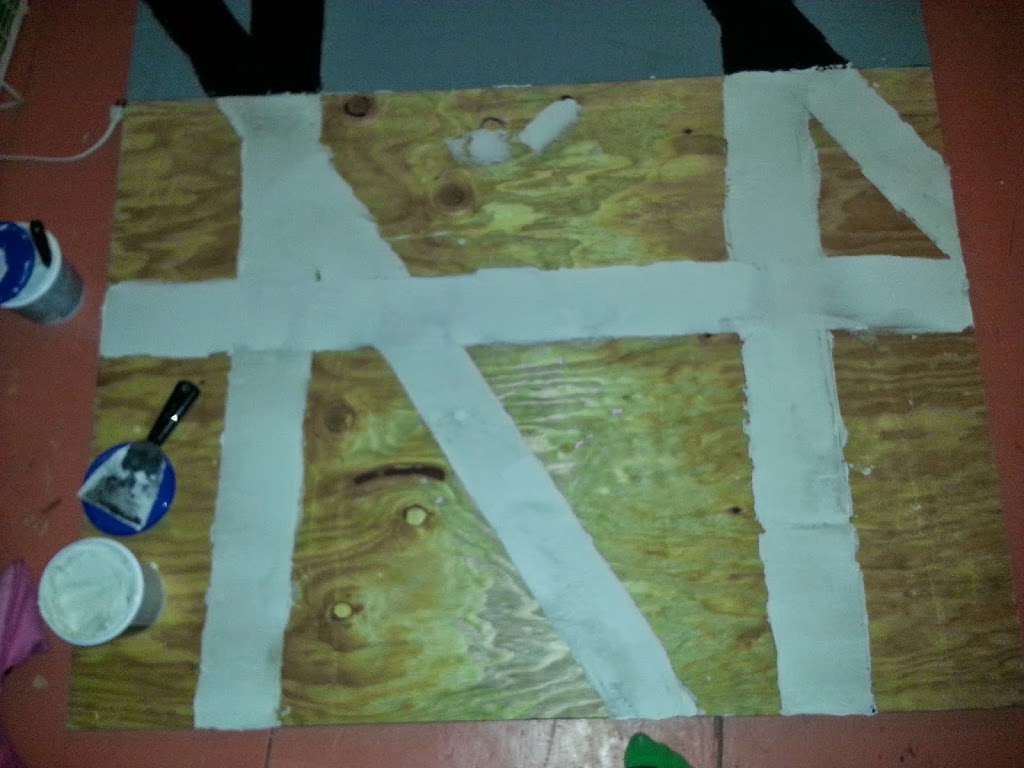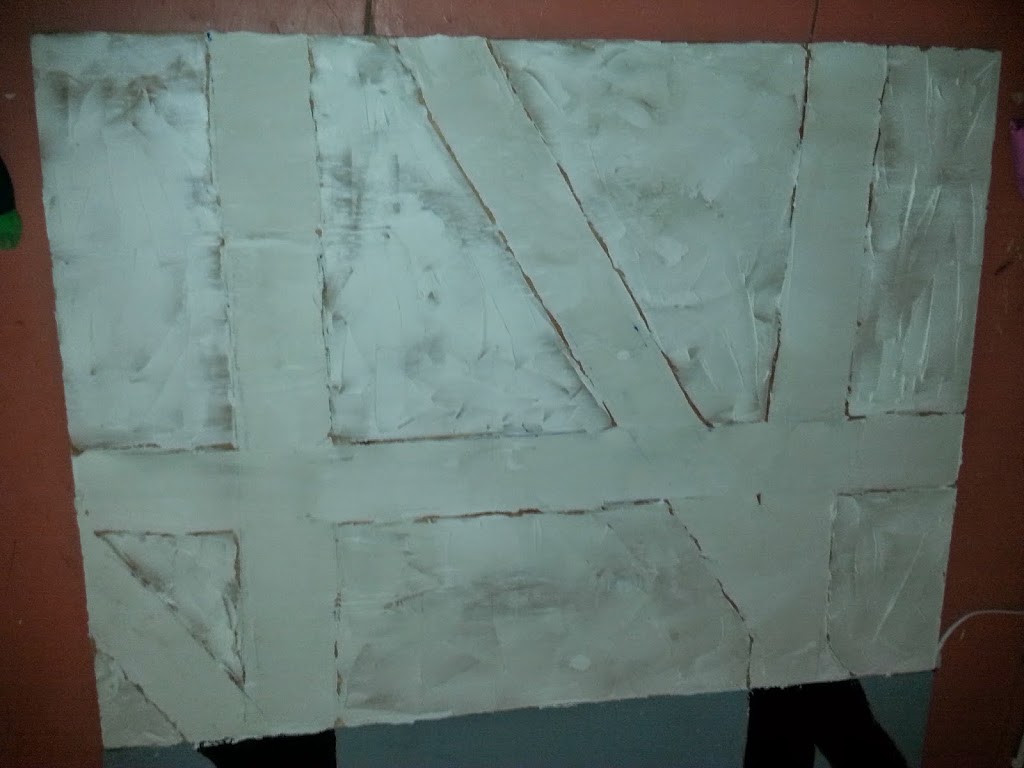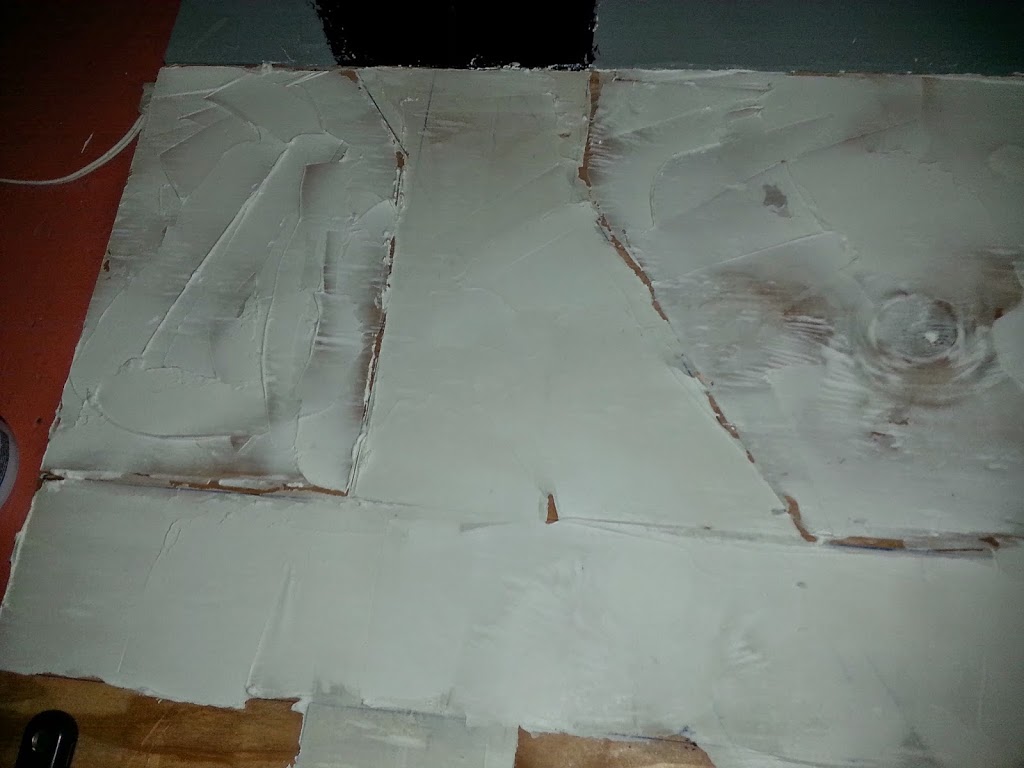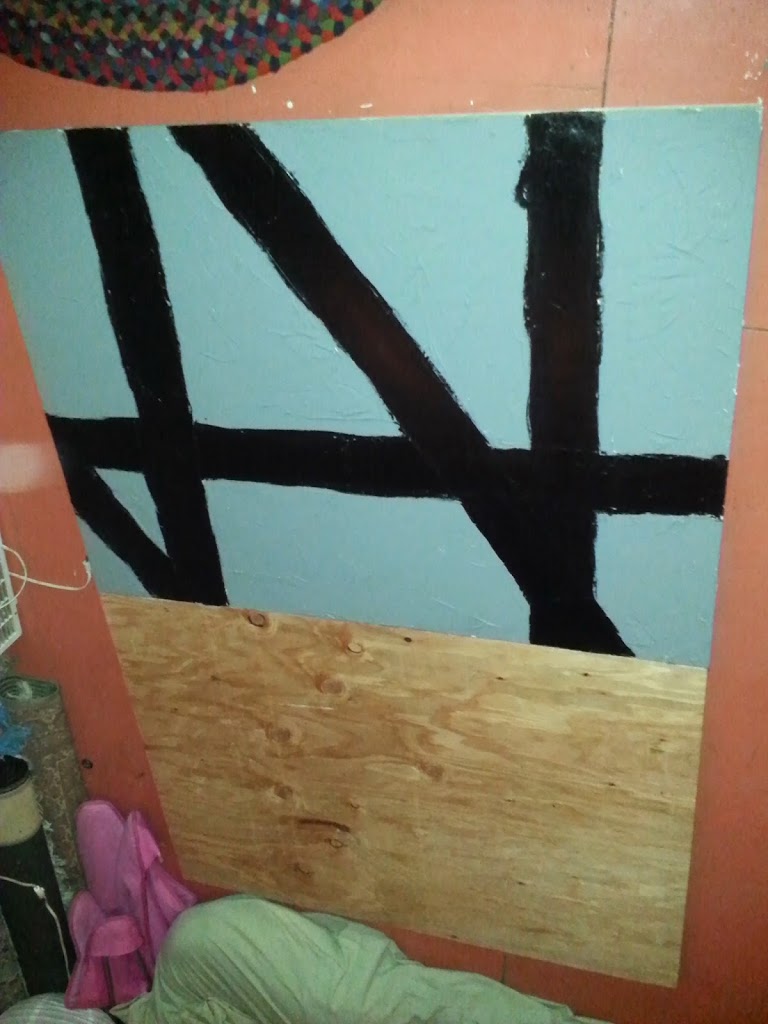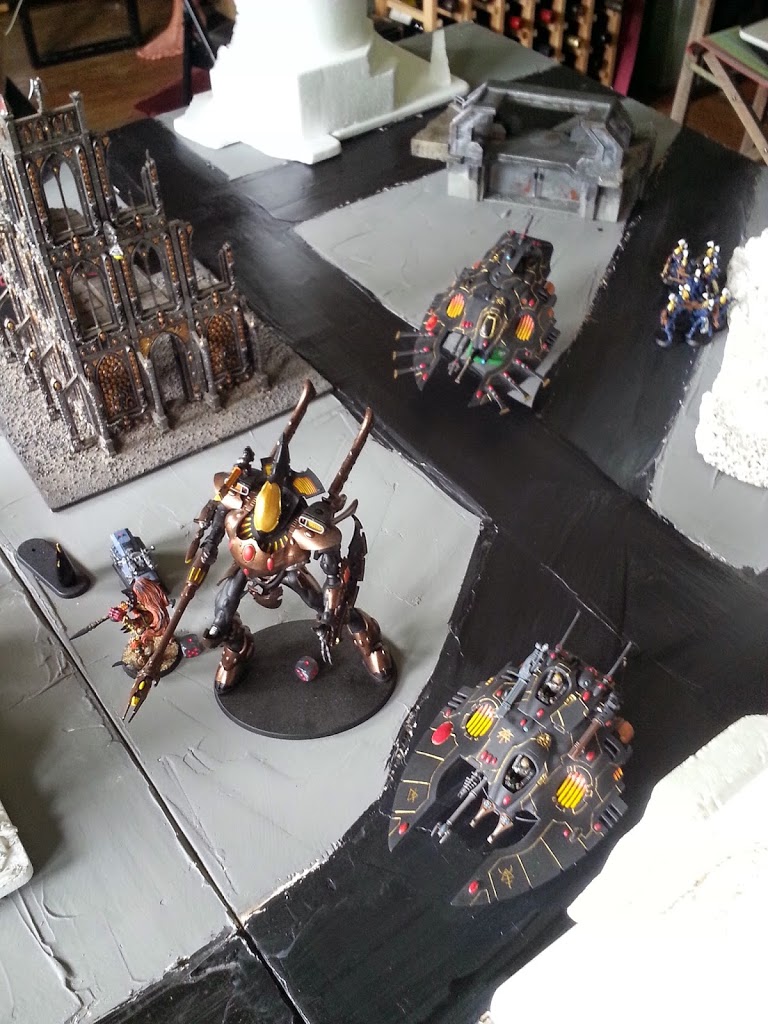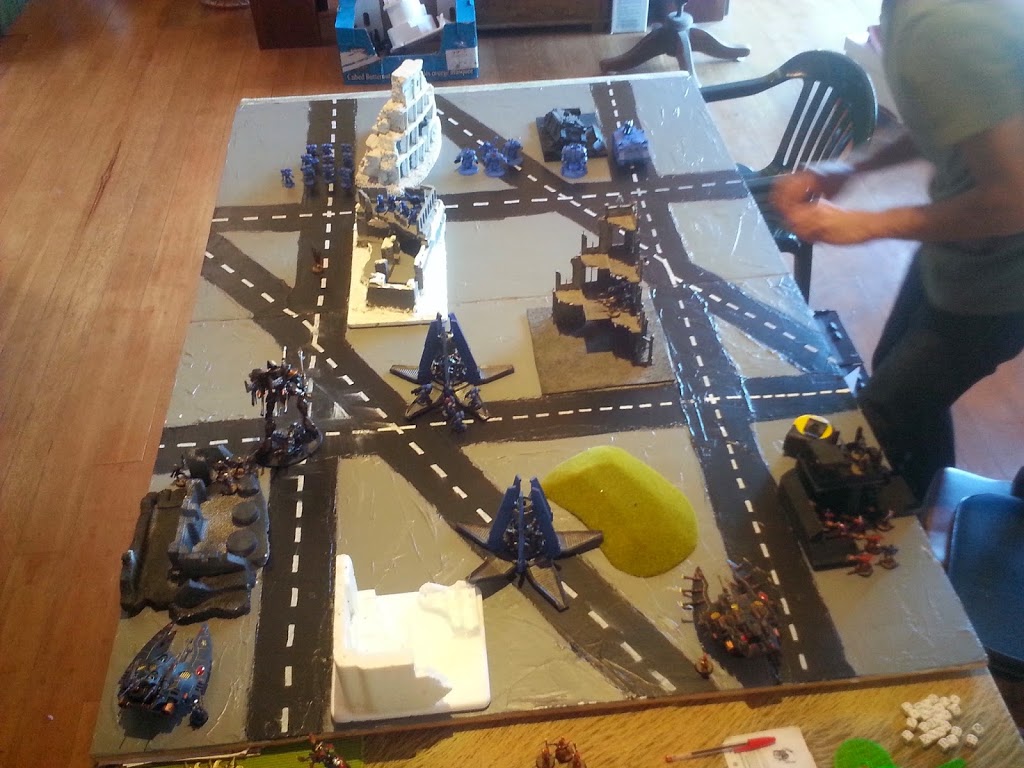40K: The making of a DIY Gaming Table!

Hey folks! NoName1 from Warhammering here with another editorial. This time, the making of a gaming table!
I’m guessing just about everyone reading this has a gaming table of some flavor or another already, but I wanted to take a moment to share what I did to make mine, and why I did it the way I did.
Cheap, Sturdy, Mobile
Right from the start, my table cost me ~$40. It’s sturdy, mobile, and thematic with my terrain.
Let’s start with the basics. I’m still at the life stage where I’m moving around a lot, and the places I live don’t tend to have dedicated space where I can take over a table and leave it set up. Also, the furniture available may be too small to hold a full-sized game. So I needed a table that was:
-Collapsible
-Mobile
-Thick/sturdy enough to hold itself up (and not warp or bend)
In the end I went with 1/2″ plywood from Home Depot. That was a win-win because it’s cheap (I think it was ~$18 US), they can cut it in-store (I had them cut it to two pieces, 3′ x 4′ each, and kept the spare pieces). 1/2″ was a good compromise between thick enough not to bend or warp, but “light” enough to still carry. Light is a relative term, my table is still HEAVY, but a determined gamer can carry it by themselves.
Next, I grabbed a 4′ Piano hinge and used it to connect the two large pieces. I laid the table down with the two halves next to each other, then laid the hinge over the top to screw it in.
My terrain has been in a ruined cityscape/manufactorium theme, so I leaned heavily on gray and black. This also provided me the opportunity to speed up my games – first thing I measured out Deployment Zones on the table and drew them out in pencil, then I started sculpting roads:
See what I did there? The leading edge of each road outlines a Deployment Zone. It looks pretty cool, splits of the board nicely, and saves on a ton of measuring during games. The roads above are done in thick coats of Spackle that have been smoothed over. I let it pile up a little on the edges to accentuate the roads.
Next:
Here, I used a thinner coat of Spackle with alternating strokes, making for a rough, concrete-like texture, and breaking it up from the edges of the roads.
The final touch for texturing was a hit with sandpaper (I believe I used 100 grit) to smooth off those rough edges and jagged bumps. Pay special attention to the board edges here, they’re the places most vulnerable to chipping, and if there are places where the Spackle sticks out, it can be knocked off and take a chunk of the board texture with it.
Now here’s the board with paint:

